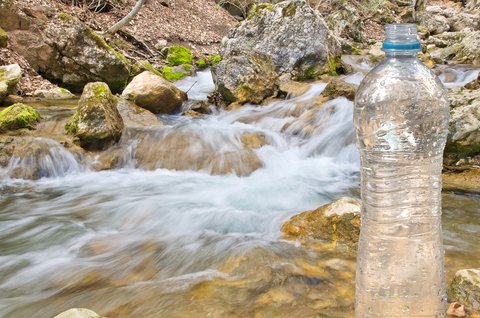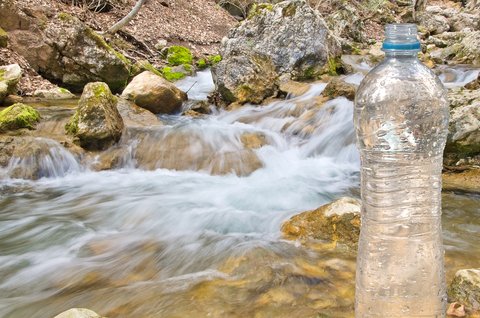
Shelter, water, fire, and food. This is the sacred order of survival. Anyone who exerts themselves physically knows how important the second one is.
We are primarily made of water. Roughly 75 percent of muscle tissue and 10 percent of fat tissue is made up of water. It’s one of the most critical components of the body. So when you’re trudging through the backcountry, you’d better be mindful about your water situation.
There used to be a day when you could dip your cup into any backcountry lake or stream without worrying about beaver fever (giardia). Sadly, times have changed. With all of the technological advances in filtration systems, there are many options for people who are going to be away from their kitchen faucets for a stretch of time. I taught a week-long survival class last week and we had access to fresh water from a well. There was no urgency to our water situation but we noticed that there were several springs in the area. There were also cattle grazing in the meadow. A few students asked whether or not drinking from the springs was safe. Valid questions indeed.
The single most important factor when making a decision to drink from springs is “where is the source?” Discovering the true source can be difficult because, even though it looks like it is clean and pure, you may not see that somewhere above is a pond or lake that animals have used. Generally, creeks, no matter how clean looking, should not be used for drinking water. Springs or seeps, on the other hand, can be used for drinking water if you carefully consider your surroundings, and know a little about the history of the land.
I was exploring an old trail in the Sierras a few weeks ago when I came upon what looked like a clean spring. The water seemed to be clean and smelled fine. I also noticed deer tracks nearby and assumed that the deer drank from the spring. Many people would have filled their canteen because of the isolated area high in the mountains. Upon further examination, I discovered that the water actually came from an old mine shaft that was concealed further up the hill by willows. The water found its way underground, only to emerge down the hill a few hundred yards as an apparent spring . . . bad medicine.
In the case of our survival class, I knew the history of the area and had knowledge of the geography above the springs. There were about a half-dozen springs along a hillside that was all green and water rich. We located the spring that was highest up the mountain and explored the area above and determined that it was clearly the source from where the water boiled out of the ground. There was no other source up the hill, no lake or meadow. We safely drank the water and felt rejuvenated by the high mineral content. This was an exception.
The bottom line, once again, is awareness. It is generally safe to assume that water, high in pristine mountains, that is seeping directly out of the earth, can be drunk without much worry. There are many areas where water seeps out of cliffs and banks. With a little knowledge and a quick look around, you generally know intuitively that the water is safe to drink. But, the rule of thumb is always to filter or boil it before you drink. Beaver fever won’t usually kill you, but it will make your life miserable. Always be safe, rather than sorry when it concerns drinking water.








